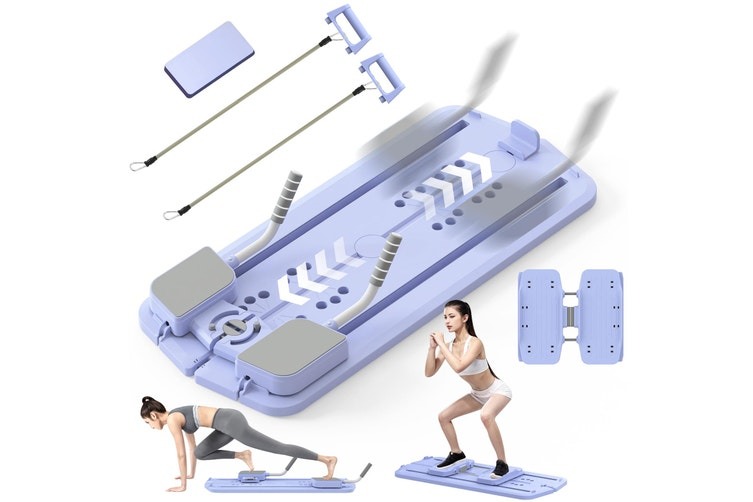


The Pilates Board assists you in establishing core stability and fundamental control of movement.
Pilates is an exercise, but it’s a way of life based on conscious movement, alignment, and core strength. Though most start their Pilates practice on the mat, a richer, more advanced practice is found with the aid of equipment such as the Pilates Board and the Pilates Machine. These pieces of equipment add variety to the exercises, challenge the body in different manners, and take your training from novice to expert.
Both Pilates Board and Pilates Machine fulfill the Pilates’ central tenets of movement, precision, breath, and flow. Yet, each provides distinct advantages and purposes.
The Pilates Board is small, floor-level gliding board typically outfitted with resistance bands or handles. It’s meant to replicate some of the Reformer’s movement patterns, and so it’s a more accessible and affordable training option to set up at home.
The Reformer, also known as the Pilates Machine, is a studio mainstay. It has a moving carriage, adjustable spring resistance, straps, and a footbar. The Reformer enables a wide variety of exercises that engage every muscle group with control and precision.
Mastery of Pilates is about advancing consciously moving from easy to challenging, light resistance to more profound challenge. Beginning with the Pilates Board sets the stage for solid ground, particularly for beginners. Once you are assured, shifting to the Pilates Machine allows you to reach new levels of strength, coordination, and body sensitivity.
That is how the transition improves your Pilates practice:
The Pilates Board assists you in establishing core stability and fundamental control of movement. Such exercises as gliding planks or lunges condition balance and engage stabilizer muscles. These early skills lay the groundwork for more sophisticated, resistance-based movements on the Pilates Machine.
Whereas the board tends to rely on body weight and resistance bands, the machine has adjustable springs. This facilitates progressive overload so that you can stress particular muscles more efficiently. You can adjust tension upward or downward to meet your needs—whether you’re rehabbing, toning, or increasing strength.
The Pilates Machine offers physical feedback through its sliding carriage and rigid springs, allowing you to realize proper alignment and muscle activation. This carries over into improved performance not only on the machine, but also back on the Pilates Board or mat work.
Looking for a workout that puts together both tools? Try this 45-minute workout that combines the Pilates Board with the Pilates Machine for a total-body burn:
From beginner to advanced user, the integration of Pilates Board and Pilates Machine takes you where you are and sustains you as you develop. This two-equipment model is perfect for:
Beginners who need a low-impact, easy introduction on the Board
The essence of Pilates is controlled, conscious movement and both the Pilates Board and Pilates Machine are intended to take you there. By starting out with the board and moving to the machine, you get the complete range of Pilates training: strength, stability, flexibility, balance, and body awareness.
